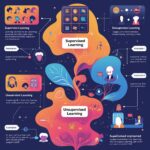
Regression Analysis Explained: Linear, Polynomial, and Beyond
In the vast landscape of data analysis, regression analysis stands as one of the most essential tools for understanding relationships between variables. Whether you’re a data scientist, business analyst, or just beginning your journey into machine learning, mastering regression techniques is critical for effective predictive modeling and statistical modeling.
This article unpacks the core concepts of regression analysis, explains the nuances of linear and polynomial regression, and explores advanced methods that go beyond traditional techniques. We’ll also share practical tips and insights to help you apply these methods confidently.
Regression analysis is a powerful statistical method used to examine the relationship between a dependent variable and one or more independent variables. The goal is to model this relationship so that we can predict outcomes, uncover trends, and generate actionable insights.
It’s widely used in fields like economics, biology, engineering, and of course, machine learning. Whether you’re trying to forecast sales, assess risk, or analyze user behavior, regression plays a crucial role.
Linear regression is the most basic and commonly used form of regression analysis. It assumes a straight-line relationship between the independent variables and the dependent variable.
In its simplest form, linear regression fits a line to a set of data points by minimizing the sum of the squared differences between the observed values and the predicted values. This line is often represented as:
y = a + b*x
Where:
y is the dependent variablex is the independent variablea is the interceptb is the slopeLinear regression is ideal for:
When the relationship between variables is not linear, polynomial regression offers a better fit by introducing polynomial terms to the model.
Polynomial regression expands the linear model to include squared or higher-order terms:
y = a + b1*x + b2*x^2 + ... + bn*x^n
This allows the regression curve to bend and better match more complex patterns in the data.
Polynomial regression is useful for:
Regression doesn’t stop at linear or polynomial forms. As data complexity increases, so does the need for more sophisticated methods.
These regularization techniques are designed to prevent overfitting by adding a penalty to the regression coefficients.
Despite the name, logistic regression is used for classification, not regression. It models the probability that a given input belongs to a particular class.
This technique iteratively adds or removes predictors to find the best model. It’s particularly useful in exploratory data analysis.
When your data cannot be modeled well using polynomial terms, nonlinear regression allows you to fit more complex functions like exponentials, logarithmic curves, or sigmoids.
In machine learning, regression analysis is a foundational tool for supervised learning. Regression algorithms are often used in scenarios like:
Understanding the output of your regression analysis is key to making informed decisions.
Key metrics include:
These metrics help in evaluating model accuracy and identifying opportunities for refinement.
Regression analysis is powerful but must be used correctly. Here are some common mistakes:
Regression analysis is a cornerstone of statistical modeling and predictive analytics. From the simplicity of linear regression to the flexibility of polynomial regression and the sophistication of advanced techniques, each method offers unique value depending on the problem at hand.
As you advance in your data analysis journey, understanding and applying these regression techniques will allow you to extract meaningful patterns, forecast accurately, and make smarter decisions. With the right approach, tools, and mindset, you can go far beyond regression analysis and unlock the full potential of your data.
Looking to advertise, promote your brand, or explore partnership opportunities?
Reach out to us at
[email protected]












Chose where you want to study, and we will let you know with more updates.